After the Prohibition Treaty: A Practical Agenda to Reduce Nuclear Dangers
July/August 2017
By Lewis A. Dunn
Frustrated by the bilateral and multilateral arms control stalemate and energized by concerns about the risk of nuclear weapons use, more than 120 non-nuclear-weapon states have just adopted a nuclear weapons prohibition treaty that will be opened for signature in September.
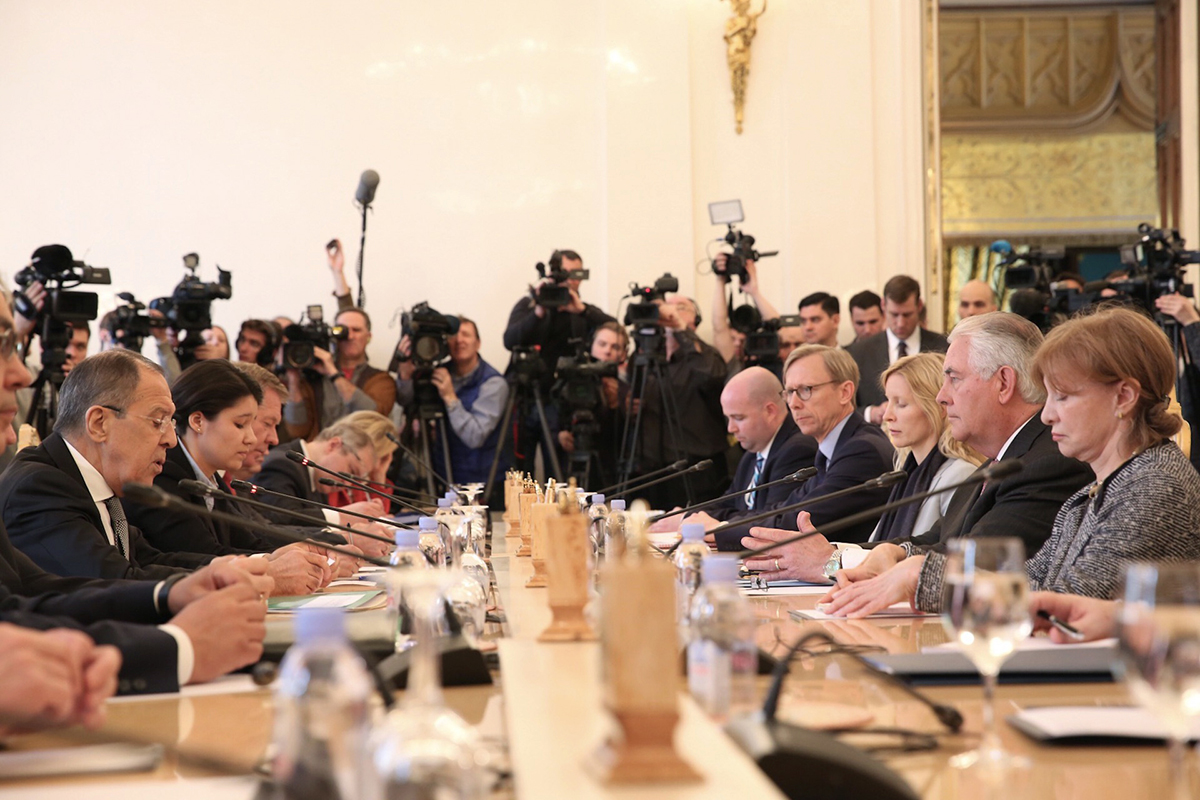 Absent adherence by the world’s nuclear-weapon states, which is a given, this treaty will not break the global nuclear arms control stalemate nor reduce the risk of the first use of a nuclear weapon since 1945. This troubling reality calls for fresh consideration of what may yet be achievable by both nuclear-weapon and non-nuclear-weapon states, lest nuclear dangers grow.
Absent adherence by the world’s nuclear-weapon states, which is a given, this treaty will not break the global nuclear arms control stalemate nor reduce the risk of the first use of a nuclear weapon since 1945. This troubling reality calls for fresh consideration of what may yet be achievable by both nuclear-weapon and non-nuclear-weapon states, lest nuclear dangers grow.
Today’s differences are so great that dramatic advances cannot be expected. Rather, more limited opportunities should be pursued to overcome the bilateral U.S-Russian and U.S-Chinese arms control stalemates, go beyond the deadlock at the UN Conference on Disarmament, and reduce the polarization between non-nuclear and nuclear-weapon states that threatens the future of the nuclear Nonproliferation Treaty (NPT). Action is needed now because the turning points ahead, unless avoided, will increase global nuclear dangers significantly. The United States and the other NPT nuclear-weapon states have a special responsibility, given their own interests, NPT obligations, and possession of nuclear weapons, to prevent those turning points.
Drawing on a comprehensive reflection on the future global nuclear disarmament agenda, this article sets out five important opportunities.1
Return to first principles in U.S.-Russian strategic relations
The United States and Russia continue to implement the New Strategic Arms Reduction Treaty (New START). But its fate is uncertain after 2021, when it can be extended for up to five years, replaced, or allowed to expire. The Trump administration has announced a major review of nuclear policy, evaluating questions such as the future requirements for U.S. nuclear forces and whether to reaffirm support in principle for the goal of abolishing nuclear weapons. 2 Further, Russia’s violation of the Intermediate-Range Nuclear Forces (INF) Treaty could augur its readiness to cast aside the decadeslong process of negotiated agreements to regulate its strategic relationship with the United States.
There is deep skepticism about arms control in Moscow and among the more conservative U.S. defense experts who are likely to serve as senior Trump administration officials. There are many reasons for this. In Moscow, one important reason is that arms control no longer is seen as an effective means to restrain U.S. freedom of action, particularly regarding missile defenses and conventional-strike capabilities perceived as threatening Russia’s nuclear deterrent. 3 Ironically, U.S. conservatives believe that arms control imposes too many constraints on U.S. freedom of action, a view deeply rooted in former Cold War constraints on missile defenses.
Still, neither country will benefit if the 50-plus-year legacy of negotiated regulation of their strategic relationship gives way to unfettered and nontransparent unilateralism on strategic decisions and deployments. The outcome would be fewer windows into each other’s strategic thinking, a renewed arms race, further worsening of political relations, and heightened risk of miscalculation in a crisis or confrontation.
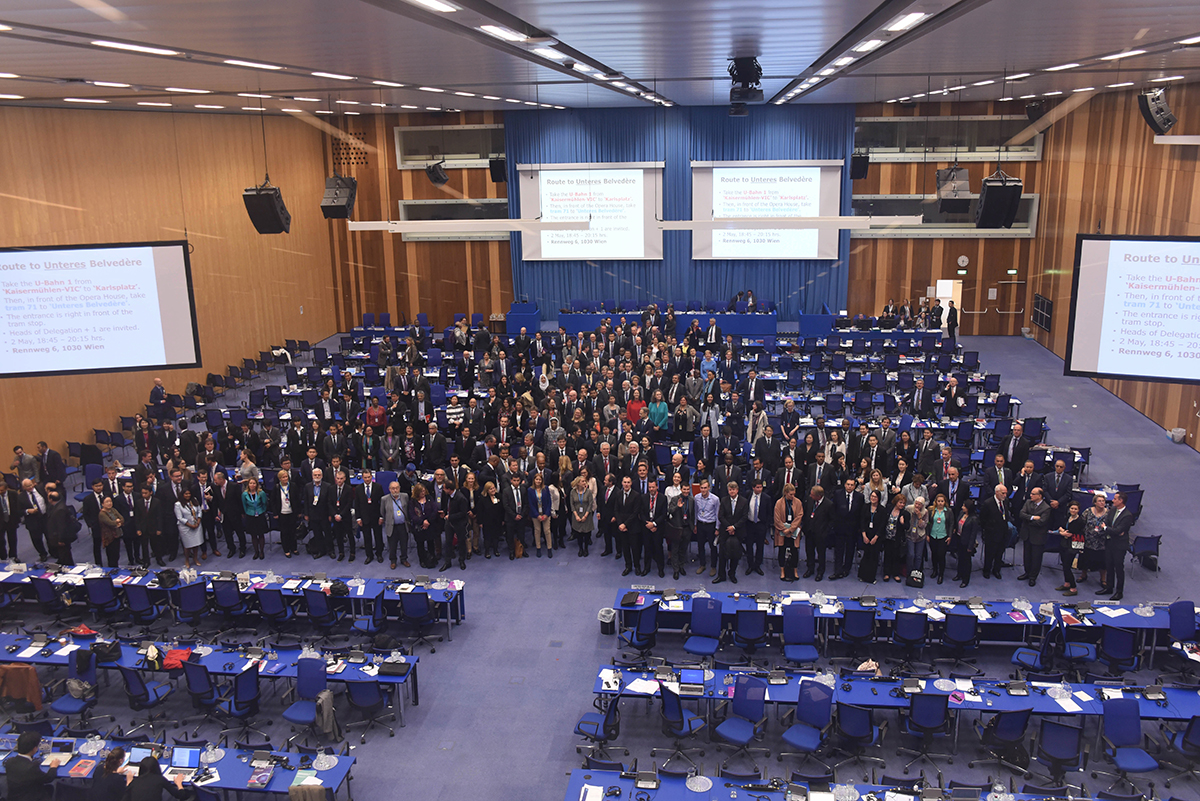 A breakdown also would undermine the NPT by confirming the belief of many non-nuclear-weapon states that the treaty cannot deliver even modest but sustained progress toward its Article VI nuclear disarmament goal. Article VI commits the five NPT nuclear-weapon states (China, France, Russia, the United Kingdom, and the United States) to “pursue negotiations in good faith on effective measures relating to cessation of the nuclear arms race at an early date and to nuclear disarmament, and on a treaty on general and complete disarmament under strict and effective international control.”
A breakdown also would undermine the NPT by confirming the belief of many non-nuclear-weapon states that the treaty cannot deliver even modest but sustained progress toward its Article VI nuclear disarmament goal. Article VI commits the five NPT nuclear-weapon states (China, France, Russia, the United Kingdom, and the United States) to “pursue negotiations in good faith on effective measures relating to cessation of the nuclear arms race at an early date and to nuclear disarmament, and on a treaty on general and complete disarmament under strict and effective international control.”
The challenge for Washington and Moscow is to step back and rethink completely the potential contributions of arms control in serving their strategic interests. A return to a dialogue of first principles is needed. That does not necessarily preclude a negotiated extension of New START for up to five years, for which that treaty provides. If the United States and Russia can quickly agree on an extension, it would buy time. An extension in itself, however, will not resolve their underlying skepticism about bilateral arms control.
Specifically, Washington and Moscow should begin by taking stock of each country’s strategic interests, concerns, and concepts, including their divergent views of what is required for strategic stability between them. Both also should focus explicitly on the implications of alternative futures for their strategic relationship after the 2021 New START deadline, from more to less cooperation, from more to less strategic dialogue and engagement among military and defense officials, and from continuation of efforts to regulate cooperatively their strategic decisions and deployments to a breakdown of the arms control process in a new unilateralism. Both countries’ enduring interest in a legitimate and effective NPT regime must be factored into their thinking. Put starkly, if the decadeslong process of cooperative regulation of their strategic postures ends with New START, do they care, why, and how much?
Assuming Washington and Moscow agree that the opportunity costs of increasingly more unilateral and more competitive strategic futures are too high, measured most in terms of growing strategic instability and nuclear risk but also great damage to their shared interest in a robust NPT regime, this return to first principles should next explore how to address each side’s strategic concerns. All issues should be discussed: offenses and defenses; space and cyberspace; conventional and nonconventional; deployed and nondeployed nuclear capabilities; other dimensions of nuclear risk reduction; compliance, including the INF Treaty; and perspectives on the usability of nuclear weapons.
All approaches for cooperatively regulating their strategic relationship after New START should be considered: formal treaties, parallel formal political commitments, joint programs, and reassurance and restraint measures. In seeking to strengthen strategic stability and nuclear risk reduction, both countries should be prepared as well to contemplate major departures from current positions, including by U.S. acceptance of limits on ballistic missile defenses and new conventional prompt global-strike capabilities, and Russian reaffirmation of the injunction that a “nuclear war cannot be won and must never be fought.”
At best, this discussion of first principles would take place officially, led by senior officials in the White House and the Kremlin. Alternatively, Presidents Donald Trump and Vladimir Putin could create a special joint commission of retired senior political and military officials from their defense and foreign policy communities with governmental observers. In either case, the mandate would be to report on what is at stake should the bilateral arms control process collapse and, more importantly, possible cooperative ways forward after New START.
The semiofficial option would be more exploratory and thus likely more attractive to the Trump administration and Putin’s Moscow. The prospects for such an exchange will depend partly on whether the two presidents conclude, for reasons set out already, that their countries’ interests would not be served by allowing bilateral arms control to fade into history. Those prospects would depend as well on whether announcing agreement to such exchanges would be regarded by Trump and Putin as signaling their commitment to seek an improved political relationship consistent with their statements following Trump’s election.
Avoid a “lose-lose” turning point in U.S.-Chinese strategic interaction
Given deep uncertainties and suspicions about each other’s intentions, plans, and programs, the United States and China are nearing a lose-lose turning point of sustained strategic competition. 4 The prospect is growing that Washington and Beijing increasingly will take unilateral actions to lessen their uncertainties and suspicions. The result will be a costly arms race, greater risk of miscalculation if a crisis or confrontation cannot be avoided, and worsening political relations. If not prevented, a North Korean nuclear and missile threat to the United States will further increase the likelihood of strategic competition by triggering many U.S. defensive activities, whose spillovers would impact the U.S.-Chinese strategic relationship. The recent U.S. deployment of the Terminal High Altitude Area Defense system in South Korea, which China fears could undermine its nuclear deterrent, exemplifies that prospect.
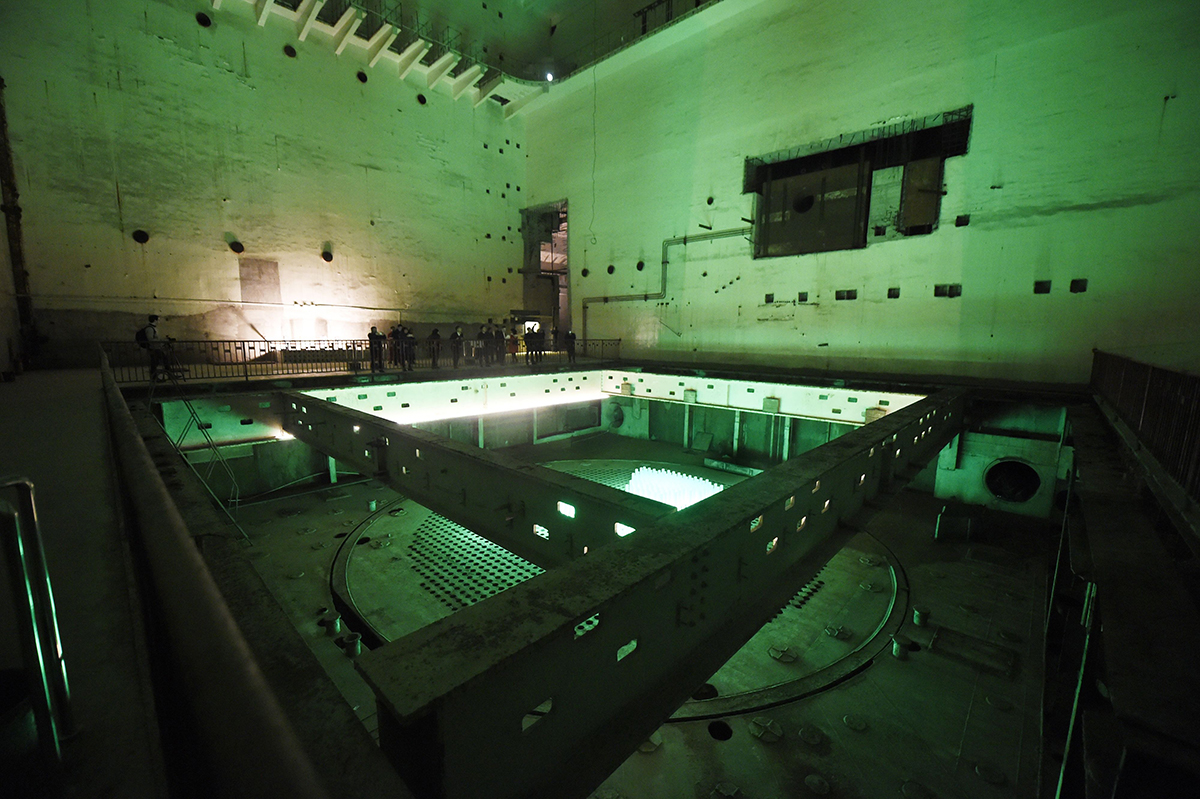 U.S. proposals to head off growing strategic competition have proven unattractive in Beijing. 5 These include the Obama administration’s official proposal for a strategic stability dialogue, to understand Chinese concerns and provide reassurance about U.S. regional and strategic choices, and proposals in semi-official “Track 1½” and expert-level “Track 2” meetings by U.S. participants to explore a process of mutual reassurance and restraint to reduce each side’s uncertainties and suspicions. 6
U.S. proposals to head off growing strategic competition have proven unattractive in Beijing. 5 These include the Obama administration’s official proposal for a strategic stability dialogue, to understand Chinese concerns and provide reassurance about U.S. regional and strategic choices, and proposals in semi-official “Track 1½” and expert-level “Track 2” meetings by U.S. participants to explore a process of mutual reassurance and restraint to reduce each side’s uncertainties and suspicions. 6
Chinese reluctance is perhaps explained by uncertainty about what such a process of reassurance and restraint would require of China and what it would get in return. Trump administration views remain to be determined, although with its emphasis on setting the U.S. nuclear arsenal as “top of the pack,” it could prove even more skeptical than the Obama administration of China’s strategic intentions, plans, and programs.
Given both countries’ interests in avoiding a lose-lose situation that heightens strategic competition, official exploration of a more comprehensive process of mutual reassurance and restraint still would be the best approach. Yet, it could remain out of reach. Instead, Washington and Beijing should consider two more limited ways to test that broader concept.
The newly initiated reviews of the U.S. nuclear posture and ballistic missile defense likely will take many months. China’s strategic posture is unlikely to be a central focus of these reviews, but it is unlikely to be an afterthought. As those reviews advance, the Trump administration should propose that the United States and China hold an official-level experts exchange to allow for Chinese input. That discussion could cover the overall regional and global nuclear landscape; the projected evolution of each country’s nuclear and other strategic capabilities, doctrine, planning, and investments in the region; and, more broadly and not least, the strategic choices by either country that would be of most concern to the other. Of course, there would be limits on what either country would say, but the results still would prove valuable to both sides.
For Washington, an understanding of China’s evolving posture would be improved, and uncertainties would be reduced. Any later decisions that run counter to Chinese objections would be made at least with some insight into those positions. For Beijing, the payoff would be influence over Washington’s decisions, if only by making China’s concerns known in advance and signaling potential counters. For each country, this dialogue would be a valuable political signal to the other of its desire for a more cooperative, less competitive overall relationship. It also would be one way to begin to explore the concept of mutual reassurance and restraint.
Turning to the second proposal, North Korea’s growing nuclear and missile capabilities will create significant pressures for U.S. and allied military countermoves, such as augmented regional and homeland missile defenses, conventional prompt global-strike options, augmented in-theater surveillance and regional-strike capabilities, heightened anti-submarine warfare activities, and cyberwarfare options. Against that backdrop, the Trump administration should propose a dialogue with Beijing focused on possible actions that the United States could believe necessary to neutralize North Korea’s nuclear missile threat and on possible Chinese reactions and responses to the spillovers for China of those actions.
From a U.S. perspective, one purpose again would be to ensure that U.S. decisions were informed by an understanding of potential implications for the U.S.-Chinese strategic relationship. There also would be insights into Chinese strategic thinking, posture, and decision-making to the extent that Chinese arguments were buttressed by setting out the strategic logic behind specific concerns. An additional benefit for the Trump administration would be to highlight the opportunity costs for China of North Korea’s advancing nuclear and missile capabilities. For China, there again would be an opportunity to influence U.S. decisions.
For both countries, such exchanges would enable their officials to identify and explore mutually acceptable options to manage the spillovers of U.S. actions for their strategic relationship in return for windows into Chinese activities and for Chinese restraint in areas of U.S. concern.
Turn FMCT into a nuclear disarmament building block
Multilaterally, a deadlocked Conference on Disarmament (CD) has been unable for over two decades to begin negotiations on a fissile material cutoff treaty (FMCT). An FMCT designed only to halt production of such material for nuclear weapons, however, is a treaty whose time has passed. Even if the CD deadlock ends, the payoffs of a production cutoff alone will be minimal. India and Pakistan will not adhere to such a prohibition, choosing instead to protect their options to produce more nuclear weapons materials; the five NPT nuclear-weapon states most probably have ceased production; and most non-nuclear-weapon states reject a production cutoff as an important Article VI step.
Henceforth, a treaty placing limits on fissile material should be crafted explicitly as a nuclear disarmament building block. Specifically, any future treaty should encompass wide-ranging transparency measures, including declarations of nuclear weapons material production, utilization, and storage facilities; flows of fissile material for permitted military purposes; flows and sites related to the disposition and storage of nuclear weapons material from dismantled nuclear warheads; flows of surplus material placed under international safeguards; and best estimates of past production and existing stocks of nuclear weapons materials. At this stage, such transparency measures still would stop short of provisions for the required elimination of previously produced nuclear weapons materials.
In addition, with the CD deadlocked, fissile material limits should be pursued elsewhere. The negotiation of the 1997 Mine Ban Treaty, known as the Ottawa Convention, and the current negotiations for a nuclear weapons prohibition treaty provide alternative models: in one case, an ad hoc negotiation among like-minded countries; in the other, a negotiation empowered by a UN resolution. This approach would be one way for U.S. officials to highlight the absence of necessary conditions for nuclear abolition, in this case, knowledge about past production and existing stocks of nuclear weapons materials. In turn, for U.S. NPT interests, it would signal readiness to cooperate with other countries to put in place such building blocks for sustained Article VI progress.
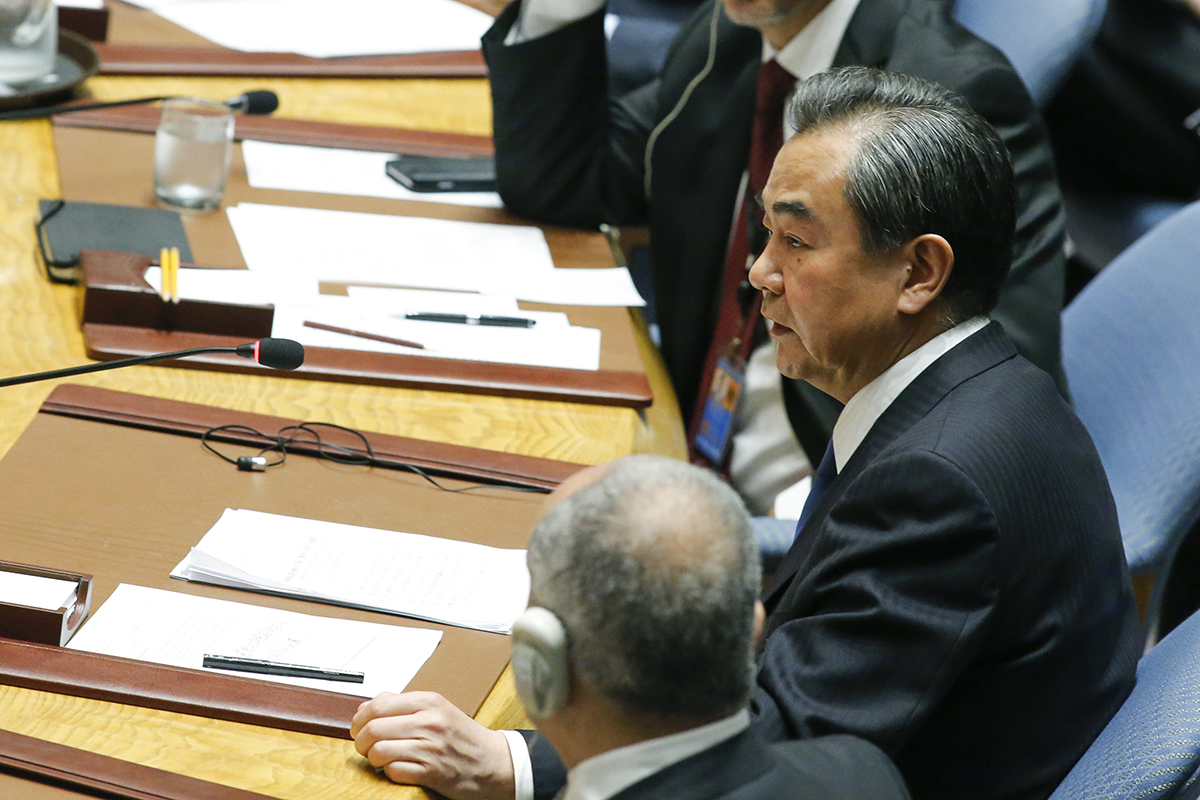 Among other NPT nuclear-weapon states, China most certainly would be uncomfortable, given its traditional uneasiness about transparency, but it also could prove reluctant to stand aside from negotiations outside of the CD. Using an FMCT to provide vital ground truth on nuclear-weapon-state activities would offer critics among non-nuclear-weapon states a treaty that clearly would advance nuclear disarmament goals.
Among other NPT nuclear-weapon states, China most certainly would be uncomfortable, given its traditional uneasiness about transparency, but it also could prove reluctant to stand aside from negotiations outside of the CD. Using an FMCT to provide vital ground truth on nuclear-weapon-state activities would offer critics among non-nuclear-weapon states a treaty that clearly would advance nuclear disarmament goals.
Demonstrate risk-reduction actions by nuclear-weapon states
Four years after the first of three conferences on the humanitarian impact of use of nuclear weapons, the five NPT nuclear-weapon states still lack a credible response to the humanitarian impact movement and the legitimate concerns it raises about the risk of use of nuclear weapons. This failure has been costly to their own interests and remains so.
Along with frustration at today’s nuclear arms control stalemate, the belief of many non-nuclear-weapon states that the risk of nuclear weapons use is significant and increasing has been the most important source of support for negotiating a prohibition treaty. 7 In turn, that belief and the nuclear-weapon states’ response has heightened polarization within the NPT community. The continued intensification of this polarization is the most likely pathway to the NPT’s loss of credibility and legitimacy. That outcome is not in the interests of the NPT nuclear-weapon states or, for that matter, the non-nuclear-weapon states. In turn, although the magnitude of nuclear risk can be debated, it is increasingly possible to craft credible scenarios for a next use of nuclear weapons. For both reasons, the interests of the United States and the other NPT nuclear-weapon states would be served by acknowledging the concerns of virtually all nations about the risk of use of nuclear weapons and demonstrating their commitment to reduce that risk to an absolute minimum.
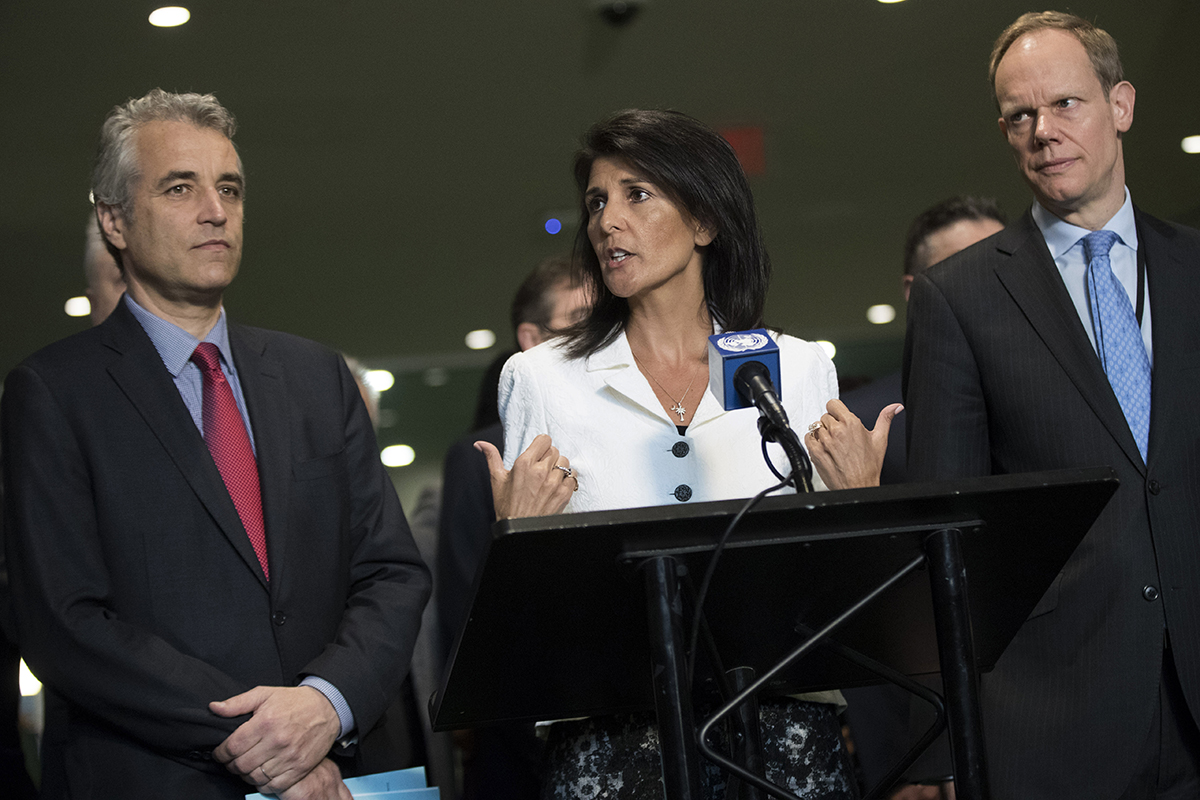 With that goal, the NPT nuclear-weapon states should announce that nuclear risk reduction will become part of their ongoing exchanges as the five permanent members of the UN Security Council. Those exchanges could be carried out in the so-called P5 Process of annual meetings and interim discussions linked to the NPT or on the margins of the Security Council itself. An initial focus could be potential pathways to a next use of a nuclear weapon, whether by a nonstate actor or a state; by accident, intention, or miscalculation; limited or more extensive. Possible areas then could be explored for cooperation among the NPT nuclear-weapon states to prevent a next use. Cooperation could focus, for example, on how to defuse an escalating crisis between India and Pakistan under the nuclear shadow, perhaps the most plausible immediate pathway. Another focus could be cooperation to head off a terrorist nuclear attack. Actions by the NPT nuclear-weapon states to provide humanitarian assistance should a nuclear detonation occur is another area for cooperative response.
With that goal, the NPT nuclear-weapon states should announce that nuclear risk reduction will become part of their ongoing exchanges as the five permanent members of the UN Security Council. Those exchanges could be carried out in the so-called P5 Process of annual meetings and interim discussions linked to the NPT or on the margins of the Security Council itself. An initial focus could be potential pathways to a next use of a nuclear weapon, whether by a nonstate actor or a state; by accident, intention, or miscalculation; limited or more extensive. Possible areas then could be explored for cooperation among the NPT nuclear-weapon states to prevent a next use. Cooperation could focus, for example, on how to defuse an escalating crisis between India and Pakistan under the nuclear shadow, perhaps the most plausible immediate pathway. Another focus could be cooperation to head off a terrorist nuclear attack. Actions by the NPT nuclear-weapon states to provide humanitarian assistance should a nuclear detonation occur is another area for cooperative response.
Going beyond these elements, the NPT nuclear-weapon states could seek agreement on a so-called code of nuclear conduct comprised of basic principles to govern their activities and derivative undertakings to implement those principles. Specific areas for discussion include best practices for nuclear decision-making, nuclear safety and security, command and control, nuclear warning and alert status, nuclear risk reduction, nuclear doctrine and the roles of nuclear weapons, and affirmation of overall obligations, including their NPT obligations and the norm of no testing of nuclear weapons. As part of such discussions, the NPT nuclear-weapon states also could reach out to the two declared non-NPT nuclear-weapon states, India and Pakistan, and engage them on nuclear risk reduction.
This proposal probably will encounter some if not considerable caution among NPT nuclear-weapon states. Nonetheless, aside from payoffs for their NPT interests, there is another compelling reason why they should embrace nuclear risk reduction. Any use of a nuclear weapon will directly and indirectly affect all of them, whether as targets, bystanders, responders, governments with citizens at risk overseas, holders of nuclear weapons, supporters of nonproliferation, and through resulting environmental effects.
Rebuild cooperation toward a shared vision
With the conclusion and opening for signature of the new Treaty on the Prohibition of Nuclear Weapons, its many non-nuclear-weapon-state supporters will begin rallying adherents to ensure the treaty’s entry into force. Even so, their own nuclear disarmament objectives also would be advanced by efforts to reduce today’s greatest-ever polarization and rebuild habits of cooperation within the NPT.
The nuclear disarmament ripple effects anticipated by ban supporters from their agreement to a prohibition norm remain uncertain and are longer term. It took nearly 70 years from the Geneva Protocol prohibiting the use of chemical weapons to the Chemical Weapons Convention eliminating those weapons. More immediate progress toward nuclear disarmament and nuclear risk reduction still requires cooperation from the NPT nuclear-weapon states. In that regard, Article VI remains the best legal hook for pulling those states along and, in the case of Trump administration officials, helping to convince them not to walk away completely from the historic U.S. commitment to nuclear abolition as the ultimate Article VI goal.
Equally so, the NPT nuclear-weapon states have compelling interests in reducing polarization and rebuilding habits of cooperation within the treaty. It remains the most important legal foundation of global nonproliferation success, including its obligation not to acquire nuclear weapons and of safeguards and export controls. A strong treaty signals that the world’s nations believe that ever growing proliferation is avoidable. As seen in dealing with Iran’s nuclear weapons activities, the treaty’s obligations are critical for rallying international political support to constrain or reverse problem-country programs.
Unless reversed, however, today’s polarization, frustration, and questioning of the NPT’s value could worsen, resulting sooner than anticipated in the erosion of the treaty’s credibility, legitimacy, and effectiveness. That outcome would be yet another damaging turning point. This risk and its consequences for U.S. nonproliferation interests should not be underestimated, particularly as the Trump administration proceeds with its reviews of U.S. policy on the NPT and the goal of nuclear abolition.
The 2020 NPT Review Conference cycle, just now getting underway, is an opportunity to begin rebuilding habits of cooperation. “Special time” should be set aside at the second and third preparatory committee meetings, as well as at the review conference, for detailed exchanges on the issues of most concern across the NPT. These issues include the conditions and building blocks of sustained nuclear disarmament progress, including robust nonproliferation, as well as priorities for cooperative actions to put those building blocks in place; how to define the “effective measures” of nuclear disarmament required by Article VI and the phasing of those measures over time; nuclear risk reduction priorities and cooperation; and compliance and verification strengthening, including building on the public-private effort known as the International Partnership for Nuclear Disarmament Verification and the future UN Group of Governmental Experts on Verification.
The goal of these exchanges would be to restore a sense of common purpose; create a shared vision of an achievable nuclear disarmament future in 2045, the 100th anniversary of the U.S. use of nuclear weapons against Japan; and energize actions toward that vision. The parties also could set a limited number of agreed priorities across the NPT to be achieved in the period between the 2020 and the 2025 review conferences. The decision of the NPT’s parties at the 1995 review and extension conference to set a deadline of the end of 1996 for negotiating a Comprehensive Test Ban Treaty is a precedent. That deadline was met and established what has become a global norm against nuclear testing, although the CTBT’s entry into force regrettably remains part of unfinished NPT business.
Moving beyond today’s unstable global nuclear arms control status quo and successfully avoiding the most dangerous turning points will require actions by the five NPT nuclear-weapon states most of all. Other countries matter, whether that is the supporters of a nuclear weapons prohibition treaty in rebuilding cooperation or the non-NPT nuclear-weapon states in helping reduce nuclear risks. Yet, as the NPT nuclear-weapon states have emphasized in opposing a prohibition treaty, they possess the bulk of nuclear weapons.
The security interests of the NPT nuclear-weapon states, including the United States led by Trump, would be advanced by taking on that responsibility to move beyond the status quo. Whether they will do so, even if only by pursuing the types of limited opportunities proposed in this article, remains to be decided.
In that regard, historians have written that “modern history” or, in one case, simply “Germany” reached its turning point during the revolutions of 1848 and “failed to turn,” with catastrophic results in the 20th century. 8 The security and well-being of all countries requires that no historian should be able to write from a vantage point of 2045, 100 years after the nuclear detonations over Hiroshima and Nagasaki, that the NPT nuclear-weapon states had reached their turning points at the close of the second decade of the 21st century and then failed to turn, with costly results for them and other countries during the years that followed.
Endnotes
1. Lewis A. Dunn, “Redefining the U.S. Agenda for Nuclear Disarmament: Analysis and Reflections,” Livermore Papers on Global Security, No. 1 (October 2016), https://cgsr.llnl.gov/content/assets/docs/CGSR_Document_LLNL-TR-701463_103116.pdf.
2. John Landay, “Trump Administration to Review Goal of World Without Nuclear Weapons: Aide,” Reuters, March 21, 2017.
3. For a broader appraisal, see Alexey Arbatov, “Understanding the U.S.-Russia Nuclear Schism,” Survival, Vol. 59, No. 2 (April-May 2017): 33-66.
4. The following discussion draws on the author’s participation in “Track 1½” U.S.-Chinese strategic nuclear dialogue meetings.
5. See Bradley Roberts, “Strategic Stability: From 2009 to 2017” (working paper, 2017).
6. David C. Gompert and Phillip C. Saunders, The Paradox of Power: Sino-American Strategic Restraint in an Age of Vulnerability (Washington, D.C.: National Defense University Press, 2011); Dunn, “Redefining the U.S. Agenda for Nuclear Disarmament,” pp. 68-71.
7. See Alexander Marschik, statement at the UN conference to negotiate a nuclear weapons prohibition treaty, July/August 27, 2017 (Austrian ambassador).
8. The former is a reference to G.M. Trevelyan, the latter to A.J.P. Taylor.
Lewis A. Dunn was the U.S. ambassador to the 1985 review conference for the nuclear Nonproliferation Treaty.
